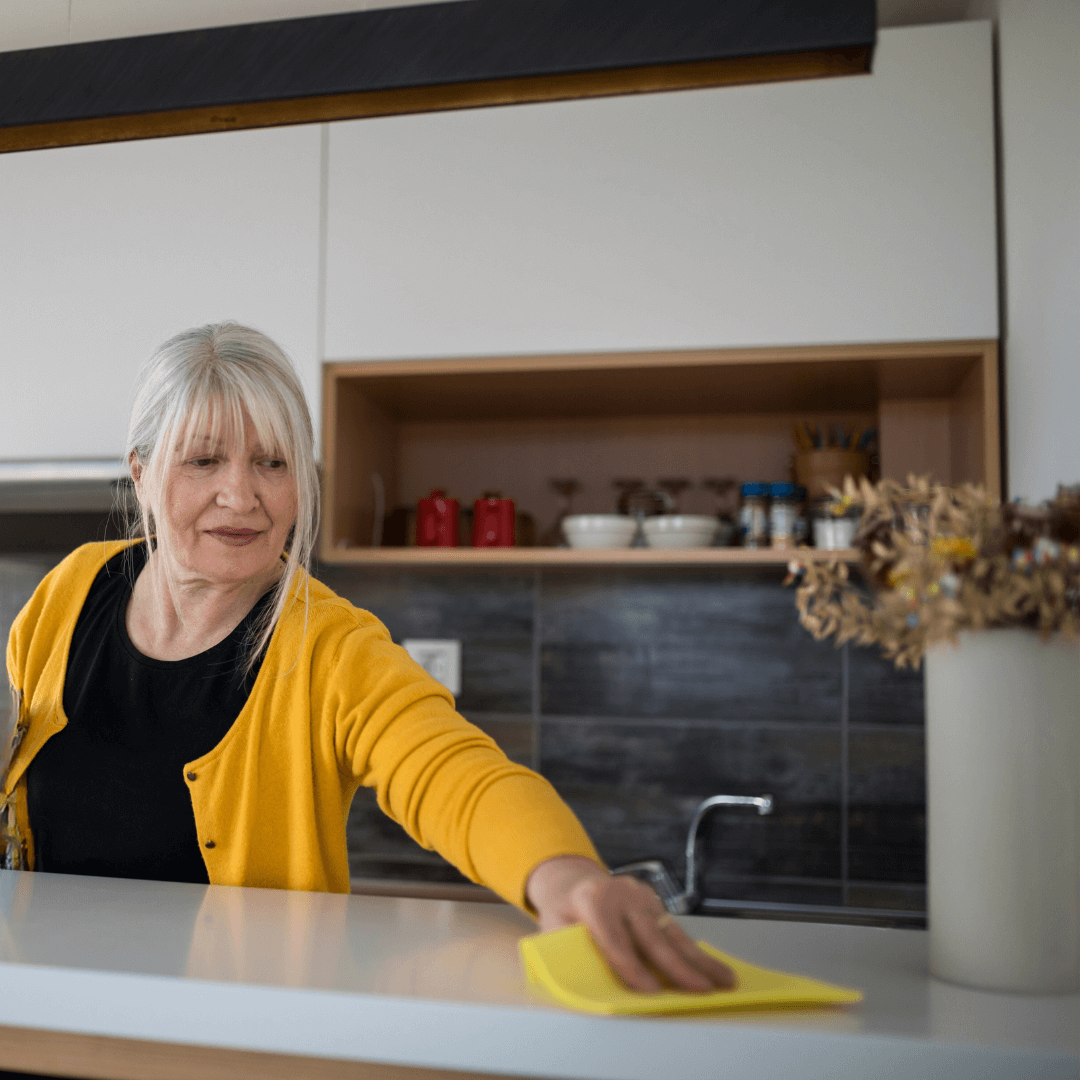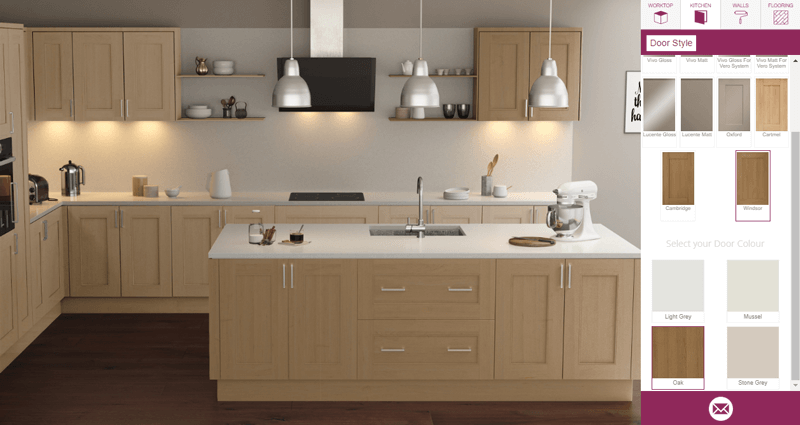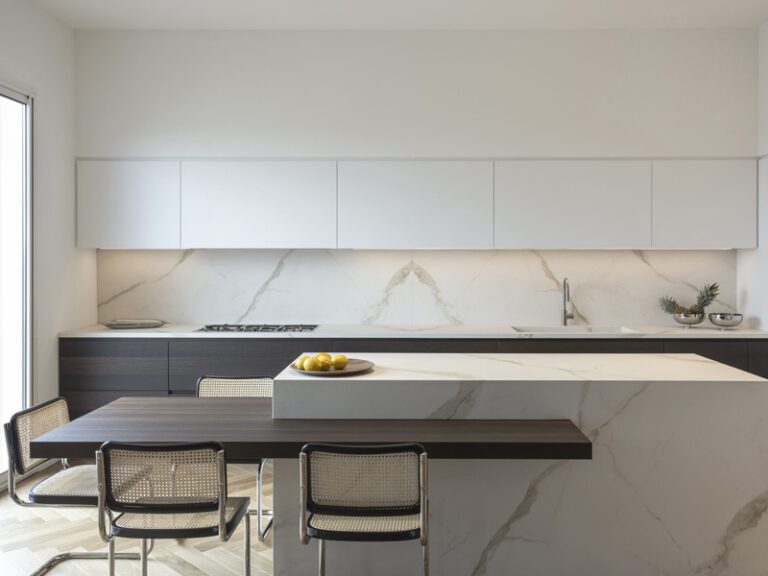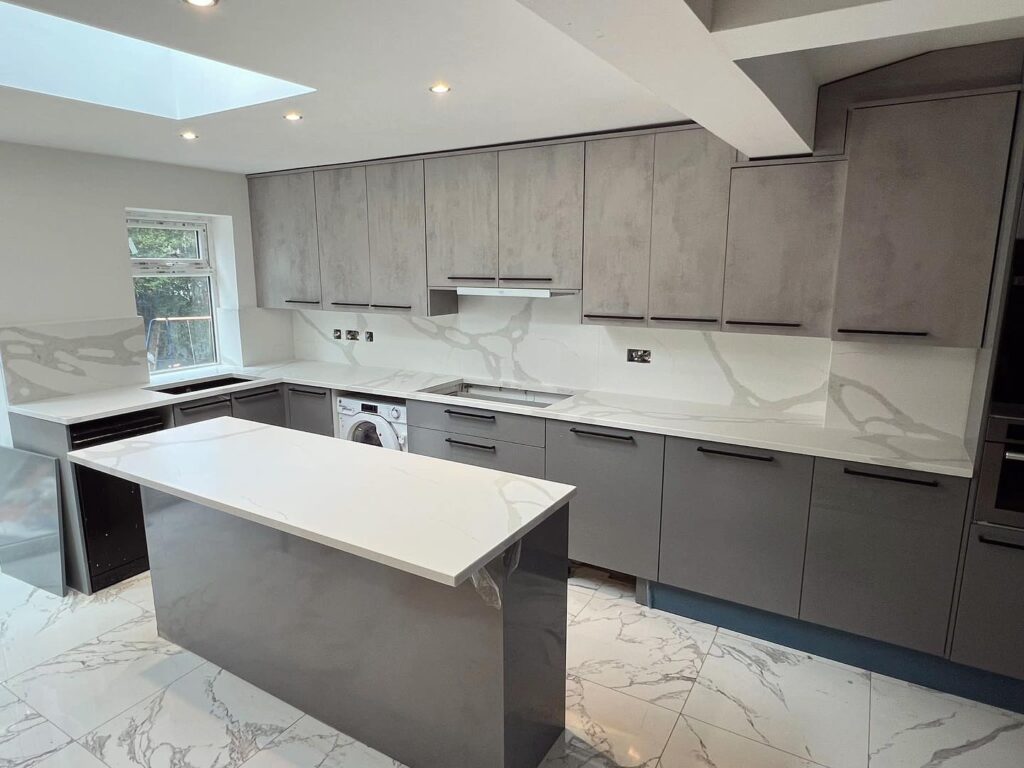

At the heart of every home lies the kitchen and choosing the right elements to create a functional, stylish kitchen space is crucial. Among the myriad of choices available, ceramic worktops have recently begun to stand out for their unique blend of beauty, resilience and versatility. As a leading UK supplier of kitchen ceramic worktops, despite the name, GraniteZone is here to guide you through the features of ceramic worktops. We will share how they can transform your home. Our team is also ready to answer any questions you might have.
The Features Of Ceramic Kitchen Worktops
Like ceramic crockery and cookware, ceramic worktops are crafted from natural materials fired at high temperatures. As a result, they achieve a hardness and durability that is hard to match. The firing process results in a surface that is not only beautiful but also incredibly resilient. With a vast array of finishes available from sleek and modern to rustic and textured, ceramic worktops offer unparalleled versatility to complement any kitchen style.
Ceramic kitchen worktops are typically Resistant to scratches, heat and UV light. This makes them ideal for busy kitchens. Their surfaces can withstand the rigours of daily use without showing signs of wear and tear.
Ceramic Worktops Pros And Cons
One of the most significant advantages of ceramic worktops is their hygienic properties. The non-porous surface prevents bacteria and mould growth. Cleaning is a breeze too; a simple wipe with a damp cloth is all it takes to keep your worktop looking pristine, with no need for harsh chemicals or special cleaners.
The aesthetic versatility of ceramic worktops is also unmatched. Whether you’re aiming for a minimalist modern monochromatic look or a warm, inviting colourful space, you’ll find a ceramic worktop to match. Advances in manufacturing techniques continue to improve ceramic worktops’ ability to mimic the look of natural stone, wood or even concrete. Ceramics provide endless design possibilities.
Ceramic worktops score high on the sustainability scale as they are made from natural, abundant materials and, compared to quartz, for example, are manufactured through energy-efficient processes. Choosing ceramic is not just a statement of style but also a commitment to green living.
While ceramic worktops offer many benefits, they do have some disadvantages for kitchen owners. The initial cost may be higher compared to some other materials, potentially stretching budgets and, although highly durable, ceramic edges and corners can chip or crack if subjected to severe impact. The hardness of the surface can also lead to more easily broken dishes if they’re dropped. Additionally, while the range of designs is vast, finding the exact pattern or colour matches may be more challenging than with other materials.
Ceramic Worktops Vs Granite, Quartz, Laminate & Wood
When considering the array of worktop materials available, it’s helpful to compare the properties of ceramic with those of other popular options.
Granite and Quartz
Granite offers unique patterns and a sense of luxury but requires regular maintenance to keep them looking their best. Quartz, an engineered stone product, provides durability but lacks the natural variation and warmth of natural granite.
Ceramic offers a balance between the two, with the practical benefits of engineered materials and the aesthetic appeal of natural stone, all while being virtually maintenance-free.
Wood
Wooden worktops add warmth and character to a kitchen but are susceptible to damage from scratches, water, and heat. Ceramic worktops can replicate the warm aesthetic of wood while offering superior durability and resistance to kitchen mishaps.
Laminate
Laminate is a budget-friendly option but falls short in terms of durability and resistance to heat and scratches. Ceramic, while potentially more of an upfront investment, offers greater long-term value through its resilience and ease of maintenance.
Ceramic Worktops & Kitchen Design Trends
The world of kitchen design is constantly evolving with new trends emerging to meet the changing needs of homeowners. Ceramic worktops are evolving too to keep pace with customer tastes. One such trend, where ceramics have a distinct advantage over other materials, is the move towards ultra-thin profiles. Ceramic worktops offer a minimalist and modern aesthetic without compromising on structural integrity or durability.
Another exciting development is the increasing availability of bold patterns and colours through ceramics. This allows homeowners to make a personal statement in their kitchen design. Integrated sinks are also gaining popularity, with seamless designs that enhance both the functionality and visual appeal of the worktop.
Fitting Ceramic Worktops
Installing ceramic kitchen worktops is a detailed process that requires precision, skill and an understanding of the material’s properties. To ensure the benefits of choosing a ceramic material are fully realised, proper installation is crucial. Here’s an overview of the steps involved in fitting ceramic worktops in a kitchen, however, we recommend professional support. Fortunately, it is an area Granite Zone specialises in.
Initial Planning and Design
The journey to installing a ceramic kitchen worktop begins with careful planning and design. This stage involves measuring the kitchen space accurately to determine the size and shape of the worktop needed. Consideration should be given to the placement of sinks, hobs, and any other integrated features, as these will require precise cutouts in the worktop. Choosing the right thickness and finish of the ceramic is also crucial at this stage, as it will impact the overall look and functionality of the kitchen.
Preparation
Once the design is finalised, the installation site needs to be prepared. This involves ensuring that the base cabinets are level and securely fixed in place. Any discrepancies in level can lead to stress points in the ceramic that might cause cracking over time. It’s also important to make sure that the area is clean and free from debris to prevent any imperfections during the installation.
Templating
Creating a template is a critical step in the installation process. This involves taking precise measurements of the kitchen layout and transferring them onto a template material, often cardboard or thin MDF. The template must include all cutouts and edges, serving as an exact guide for cutting the ceramic material. This step ensures that the worktop will fit seamlessly into the space, accommodating any irregularities in the walls or fittings.
Cutting and Finishing
Using the template, the ceramic material is then cut to size. This process requires specialised tools that ensure clean cuts without damaging or weakening the ceramic material structurally. Edges are then polished and finished according to the desired look, whether it be a simple bevel or a more intricate profile. Cutouts for sinks, hobs, and other fittings are also made with precision to ensure a perfect fit.
Installation
With the worktops cut and finished, the installation can begin. This involves carefully positioning the ceramic pieces onto the base cabinets. Due to the weight and rigidity of ceramic, it’s essential to handle them with care to avoid any damage. An adhesive is applied to the cabinet tops to secure the worktops in place. The adhesive used must be compatible with ceramic and capable of handling the weight and thermal expansion properties of the material.
Any seams between worktop pieces are then sealed with a colour-matched epoxy or silicone to create a continuous surface that prevents water from getting between or beneath the worktops. The sealing process requires a skilled hand to ensure that the seams are virtually invisible, maintaining the aesthetic integrity of the worktop.
Final Touches
The final step in the installation process involves fitting the sinks, hobs, and any other integrated features into their respective cutouts. Silicone sealant is used around these fittings to prevent water from seeping underneath the worktop. The entire installation is then cleaned, and a final inspection is carried out to ensure that everything is installed correctly and functioning as intended.
Each step outlined above is crucial in ensuring that the worktop not only looks stunning but also performs exceptionally in the demanding environment of a kitchen. While the process can be complex, the result is a durable, hygienic, and visually appealing kitchen surface that can last for years with proper care. If you have any questions about installing ceramic worktops, do not hesitate to contact our team.
Ceramic worktops are emerging as a standout choice for modern kitchens, offering a unique blend of beauty, resilience, and versatility. GraniteZone, despite its name, specialises in these ceramic surfaces, guiding homeowners through their transformative potential. Crafted from natural materials and fired at high temperatures, ceramic worktops boast exceptional hardness and durability, resistant to scratches, heat, and UV light, making them ideal for the daily demands of kitchen use. Their non-porous nature also enhances hygiene, with easy cleaning that requires no special cleaners.
Where to Buy Ceramic Kitchen Worktops
The aesthetic appeal of ceramic worktops is notable, with a wide range of finishes available to suit any kitchen style, from sleek and modern to rustic and textured. Given ceramic worktop prices, it is important to purchase them from a reputable supplier.
Installation is best left to the professionals. It is an intricate process requiring precision and understanding of ceramic properties. Each step, from ensuring base cabinets are level to the final inspection post-installation, is vital for a successful outcome.
Granite Zone is delighted to offer a range of ceramic products alongside our long-standing range of quartz and granite worktops. It makes us the ideal partner for any kitchen redesign or remodelling project. Why not ask us for a worktop quote or request a free sample?





